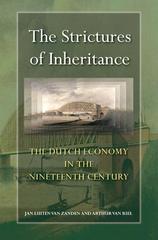Question
Many, however, including our current Federal Reserve Chairman Ben Bernanke, do not believe that this high current account deficit will be that harmful,[17]largely because of
Many, however, including our current Federal Reserve Chairman Ben Bernanke, do not believe that this high current account deficit will be that harmful,[17]largely because of the capital account (see explanation below).[18]In economic reality, the capital account is more interesting than the current account since it is the account that takes down economies. Since trade deficits (current accounts) are traditionally balanced with surplus capital accounts, the scales will tip against everyone if the capital account collapses. This is even more difficult to forecast since capital markets are the result of expectations, not realities.
Nonetheless, most agree that this high deficit level is unsustainable. Further, economists agree that it is possible that the current account deficit could be the single greatest threat to the continued prosperity and stability of the United States and world economies.Many, however, including our current Federal Reserve Chairman Ben Bernanke, do not believe that this high current account deficit will be that harmful,[17]largely because of the capital account (see explanation below).[18]In economic reality, the capital account is more interesting than the current account since it is the account that takes down economies. Since trade deficits (current accounts) are traditionally balanced with surplus capital accounts, the scales will tip against everyone if the capital account collapses. This is even more difficult to forecast since capital markets are the result of expectations, not realities.
Nonetheless, most agree that this high deficit level is unsustainable. Further, economists agree that it is possible that the current account deficit could be the single greatest threat to the continued prosperity and stability of the United States and world economies.Many, however, including our current Federal Reserve Chairman Ben Bernanke, do not believe that this high current account deficit will be that harmful,[17]largely because of the capital account (see explanation below).[18]In economic reality, the capital account is more interesting than the current account since it is the account that takes down economies. Since trade deficits (current accounts) are traditionally balanced with surplus capital accounts, the scales will tip against everyone if the capital account collapses. This is even more difficult to forecast since capital markets are the result of expectations, not realities.
Nonetheless, most agree that this high deficit level is unsustainable. Further, economists agree that it is possible that the current account deficit could be the single greatest threat to the continued prosperity and stability of the United States and world economies.
Question two.
1. With the clear explanation, describe the indifference curve______
2. The points located at the juncture of the budget line with the synchronize tomahawks shows that
3. . An economic agent contracts a loan of 15.000 lei, which he will repay in three equal annual installments. What will be the total interest paid, knowing that the annual interest rate is 12% per year?
4. An economic agent makes a bank deposit of 10.000 lei with an interest rate of 5%. What will be the amount in the bank after 2 years, if the economic agent does not make withdrawals from the account created during this period?
5. Can it the statement be true or false as according to the stages of the circular flow of the company's capital, it takes three forms: money, capital goods and commodity. Justify your answer
6. Which of the following aspects distinguish fixed capital from working capital:
a. the number of cycles of production they participate in; b. the location of the production activity;
c. the period of time after which they are replaced;
d. the way they transmit their value to the new product.
7. a. the number of cycles of production they participate in; b. the location of the production activity; c. the period of time after which they are replaced; d. the way they transmit their value to the new product
8. Fixed cost includes
9. When production volume is zero
10. Calculate the average fixed cost (AFC), for a level of production Q = 20, knowing that the total cost function is: TC = 200 + 3Q + 2Q2
Step by Step Solution
There are 3 Steps involved in it
Step: 1

Get Instant Access to Expert-Tailored Solutions
See step-by-step solutions with expert insights and AI powered tools for academic success
Step: 2

Step: 3

Ace Your Homework with AI
Get the answers you need in no time with our AI-driven, step-by-step assistance
Get Started


